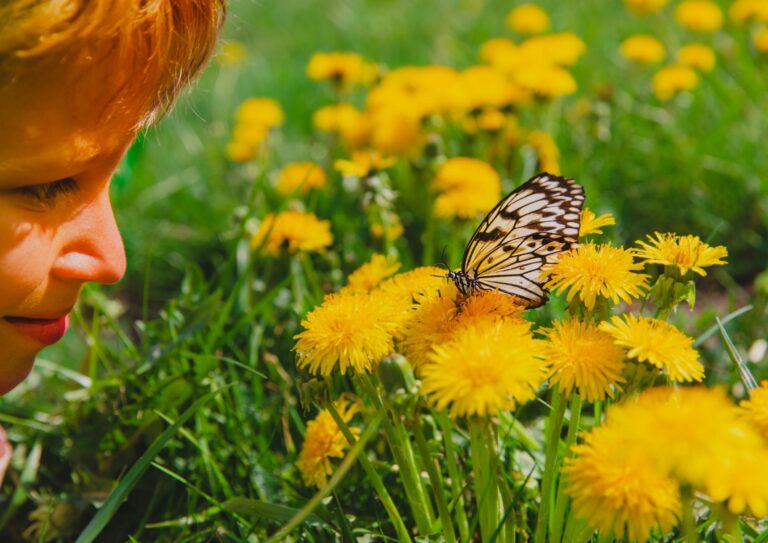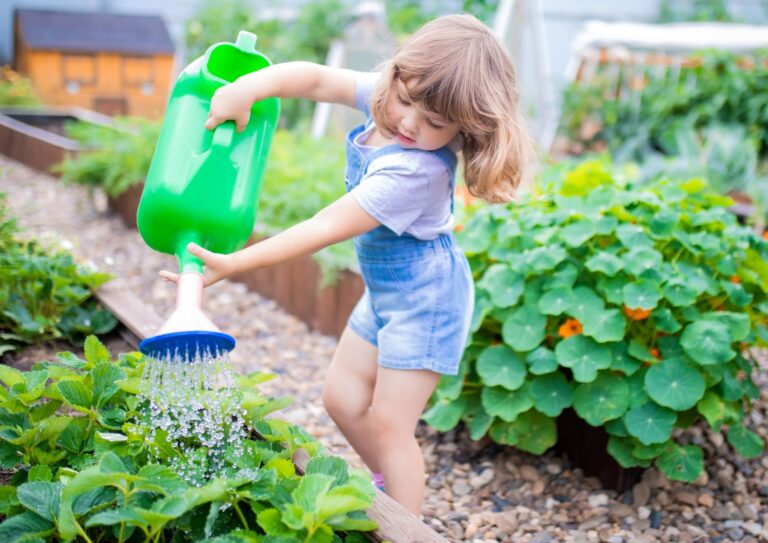Keeping your sensory butterfly garden appealing and engaging with the basic sensations as it should, requires you to spend more time in the garden and improve things. Be more observant and strive to have flowers and plants around you to enhance your mindfulness practices.
Spending ample time in your outdoor sensory garden can improve the blossoms, attract more butterflies, and keep the garden stimulating. If your sensory garden isn’t flourishing well or enticing butterflies, there are a few factors you have to look out for and enhance.
You can always make the necessary changes to bring your sensory garden back on track. You’ll just need to find another decent location with a view of the yard from your balcony or room. You’ll also need a space that has enough sunlight and protective coverings, such as trees, bushes, or walls, from strong winds. This article will help you point out the things why your sensory butterfly garden is missing the mark and how you can fix the mess!

Causes of Your Sensory Butterfly Garden’s Underperformance
There might be a variety of causes for your sensory butterfly garden’s decline. The most prevalent causes might be a lack of proper research while establishing the garden or a lack of maintenance after creating the sensory garden.
It is critical to continue working on its vitality after establishing a butterfly garden. Trimming, deadheading, digging, and irrigation are the most crucial tasks. The trimming of wasted flowers, known as deadheading, extends the blossoming period and fosters the development of additional blooms.
Here are some of the reasons why your sensory butterfly garden is missing the mark.
#1: Gardening In Bad Soil
When growing flowers, the choice of soil for the sensory butterfly garden is essential. Flowers thrive in rich soil full of organic material, whether in a box or a garden. Plants won’t require extra fertilizer if the soil is rich in nutrients.
#2: Heavy Shadow Gardening
Even if certain plants are susceptible to severe hot sun, heavy shade may not be the best remedy to prevent burning. Most plants still require sufficient sunshine to grow. A little midday shadow is ideal.
#3: Providing Insufficient or Excessive Water
Even though most plants can tolerate adversity, they thrive with modest to occasional irrigation, which ensures that they don’t wilt away. Flowers are also sensitive to damp roots, so make sure you plant them in soil with proper drainage from the start.


#4: Overlooking Pests
Plant pests like insects, whiteflies, and weevils can attack flowers. Keep a watch on your sensory garden and ensure there aren’t any unpleasant guests making themselves at home in the leaves. Plants with shredded blooms and leaf buds that refuse to open are clear indicators of an infestation.
#5: Leaving Flowers to Wither In the Heat
Flowers might suffer from the hot weather. Some plant species are more resistant to high temperatures than others, but several ordinary plants will stop flowering if the temperature gets too high. The blooms in your garden will wither away in the intense heat. However, the flowers will soon blossom when you take care of them and manage the heat.
#6: Failure to Prune and Remove Dead Flowers
Some flowers may survive with little care if grown in controlled circumstances and given enough water. However, remember to remove dead blossoms to keep your plants blooming. Pruning young plants can help shape them while also extending their flowering time.
How to Improve Your Sensory Butterfly Garden
Here are some ways for you to know how to sort out the mess:
#1: Do Your Homework
To start rejuvenating your sensory garden, conduct more research to learn about the many varieties of butterflies that live in your region. This research is significant in identifying the flowers and host crops you’ll need to grow in the garden.
You may conduct internet research to get accessible gardening techniques or start strolling around your area to see the butterflies buzzing around.
#2: Reorganize Your Garden
You’ll want to re-plan the arrangement of your garden after undertaking thorough research. Setting your plants in bunches, for instance, will make it easier for caterpillars to flutter from plant to plant. Having flowers spread across the garden will enable you to watch over the butterfly activity.
When designing your garden, look at the size of your flowers once they have developed. Categorize them according to coloration and blossoming period.
#3: Consider the Position of the Sun
Butterflies and plants both require six hours of sunshine every day. This is true for plants producing nectar, which must be in an ideal location where they can soak up light from morning till afternoon. Butterflies can only fly because of the warm sun, and they frequently eat solely in the light. You must keep the flowers in a sheltered area that receives enough sunshine.
#4: Introduce Nectar-Producing Flowers
There is just one technique to draw butterflies to your sensory garden: growing flowers that generate nectar and pollen! Insects can sense edible nectar via sensors on their feet, wings, and legs. Butterflies can also determine their preferred food by recognizing specific colors. However, to attract many butterflies, you should also grow nectar-producing flowers.


#5: Take A Natural Way
Butterfly gardening decorates and provides a habitat for the native butterfly species. You may continue to help natural processes by adopting organic pest control methods in your garden. Avoid using pesticides and other chemicals as this will provide a safe environment for your caterpillars to flourish.
#6: Make a Splashing Zone
Butterflies flock to splashing areas to get the minerals they require. You can create this area in your yard by digging a small trench and placing plastic at the bottom. Then cover it with damp soil, and you’re finished.
#7: Ensure There Is Enough Water Supply
Butterflies may get enough water from wood pulp, nectar, or mist. Moist mud and ponds are also excellent areas for them to congregate and sip water.
#8: Put Smooth Pebbles All Over Your Garden
Butterflies will require a level, firm place to relax on and expand their wings to take in the bright sun after flying about all day. This effectively recharges their batteries, sustaining soaring and eating. Butterflies frequently rest on foliage, pebbles, and ground cover. Having smooth stones scattered across your yard provides a platform for caterpillars to rest and refresh.
How to Enhance Butterfly Gardening For Kids
If you want a better children’s butterfly garden, add extra elements to your sensory gardens, such as a tiny flower bed or a waterfall, to make them more kid-friendly. Make a “touch and smell” garden with flowers with unique characteristics like lamb’s ear holes, lichen, and ivy, and plants with intense scents like lilacs, sunflowers, and choco titan.
Bottom Line
If you don’t have much room, don’t stress about cultivating a vast garden. Butterflies love any attractive garden regardless of size, so even a small garden with just a few flowers will be enough to support a vibrant environment.
It’s always best to start researching first for the best gardening ideas that can help you grow your sensory butterfly garden. Still, you may rejuvenate your sensory butterfly garden using the ideas outlined in this article, and surely with just a bit of tweaking your garden in place, it will eventually be swarmed by caterpillars and butterflies!
Related Posts
-
How to Create a Children's Sensory Garden
Gardens are, by their very nature, a wonderfully sensory experience. Even the simplest…
-
How to Create a Butterfly Garden for Kids
Imagine a visual of your garden where you see a group of colourful butterflies gracefully…
-
How to Get Started with an Outdoor Sensory Garden
An outdoor sensory garden helps in engaging and stimulating the five basic senses of taste,…



